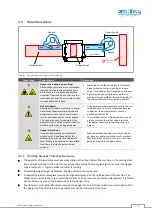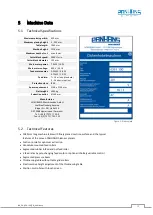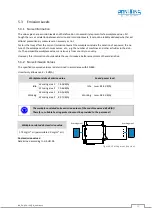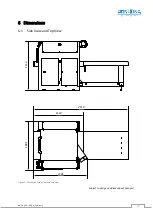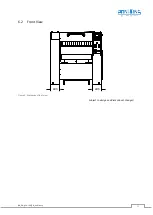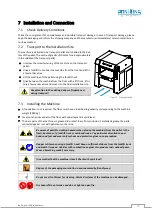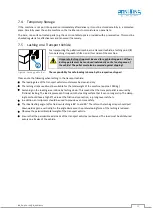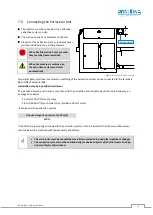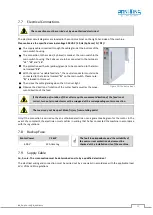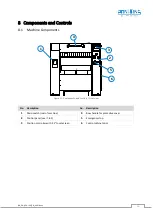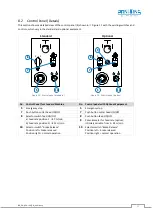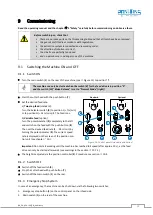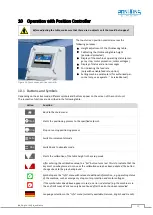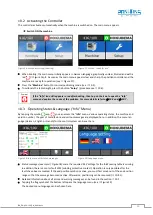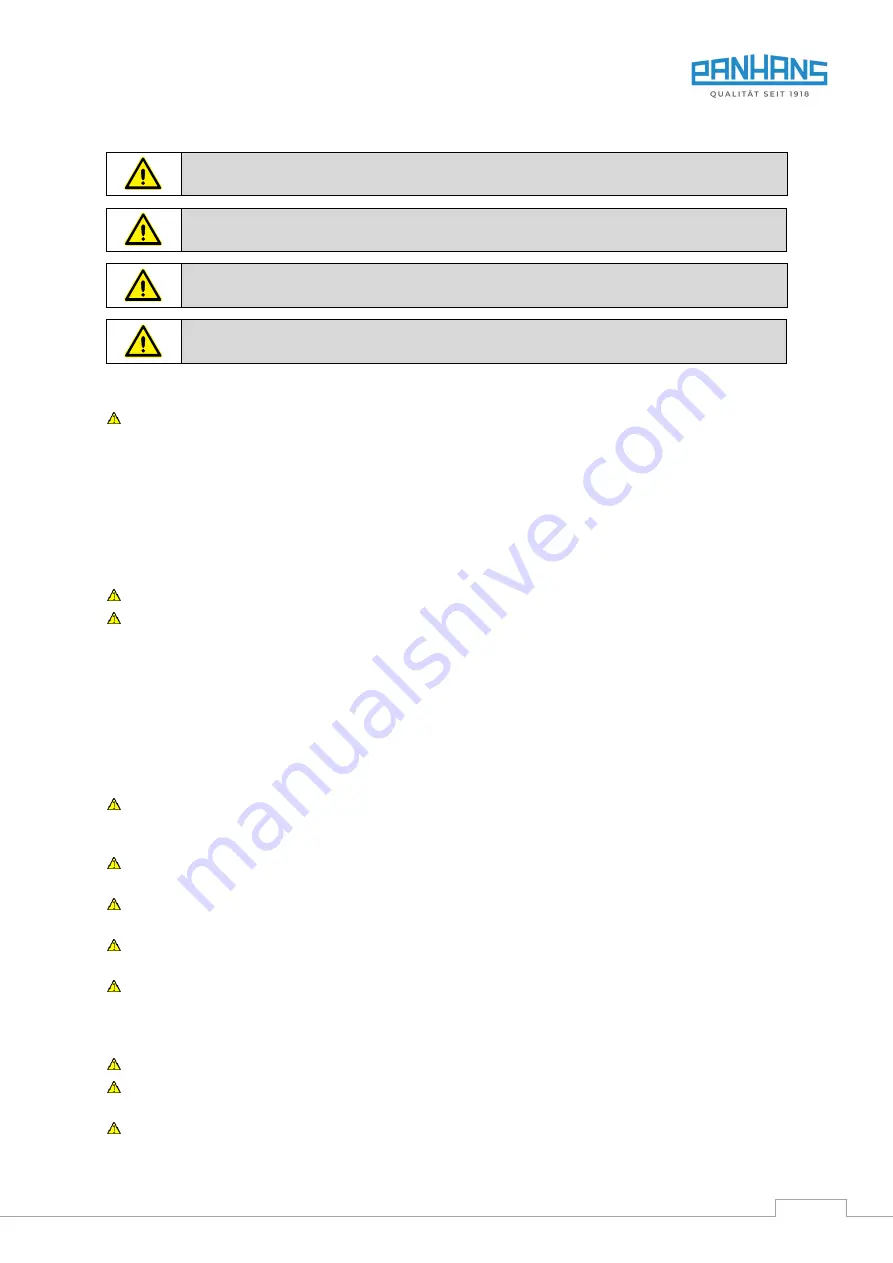
BA_PH_436-100_EN_44-21.docx
15
4.3
Safety Instructions for Specific Phases of Operation
Defects and damage to the machine are to be reported immediately after detection.
Any mode of operation that compromises safety is prohibited!
Sufficient lighting around the machine must be ensured!
The machine must not be used if the fingers of the anti-kickback system are damaged or do
not fall back unhindered by their own weight!
4.3.1
Normal Operation
Guards:
Take measures to ensure that the machine can only be operated in a safe and functional condi-
tion. Only operate the machine when all guards and safety-related devices such as
- detachable guards,
- anti-kickback system,
- emergency stop units,
- noise insulations,
- extraction system,
- separating protective devices
are available and functional.
Knife change:
Change and adjust the knifes as described in
Workpiece:
Before the operation, check the workpiece for
- foreign inclusions
- knots
- twists (contortions)
and other irregularities.
Workpieces that are longer than the infeed or outfeed table must be additionally supported
(e.g. with support rollers or similar).
Due to the automatic feed, make sure that there is sufficient space on the removal side in front of station-
ary obstacles (danger of crushing!).
Machine condition:
Check the machine for externally visible damage and defects at least once per shift!
Any changes that have occurred (including those in the operating behaviour) must be reported immedi-
ately to the responsible office or person! If necessary, stop and secure the machine immediately!
Extraction:
The machine must be connected to an effective extraction system.
This requires a mean flow velocity of 20 m/s.
Work area:
An obstacle-free work area around the machine is essential for safe operation. The floor
should be level, well maintained and free from debris such as chips and cut-off workpieces.
Planing area during operation:
Never try to remove offcuts, chips or other parts from the planing area
while the machine is running! Never use your hands to remove!
Chamfering and bevelling:
To produce chamfers or bevels, a corresponding template must be used to
guide the workpiece and produce the desired angle. Fixed guides must be fitted to the template to pre-
vent lateral movement of the workpiece. The base plate of the template must be provided with bars to
hold the template on both sides of the thicknessing table against shifting during the workpiece feed.
Workpiece inspection:
Inspect the workpiece for foreign inclusions, knots, twists and other irregularities.
Work interruptions:
Switch off the machine even during short interruptions! Never leave the machine
running unattended!
Leaving the machine:
Switch off the control voltage and main switch before leaving the machine. Never
leave the machine unattended in an unsecured state.

















